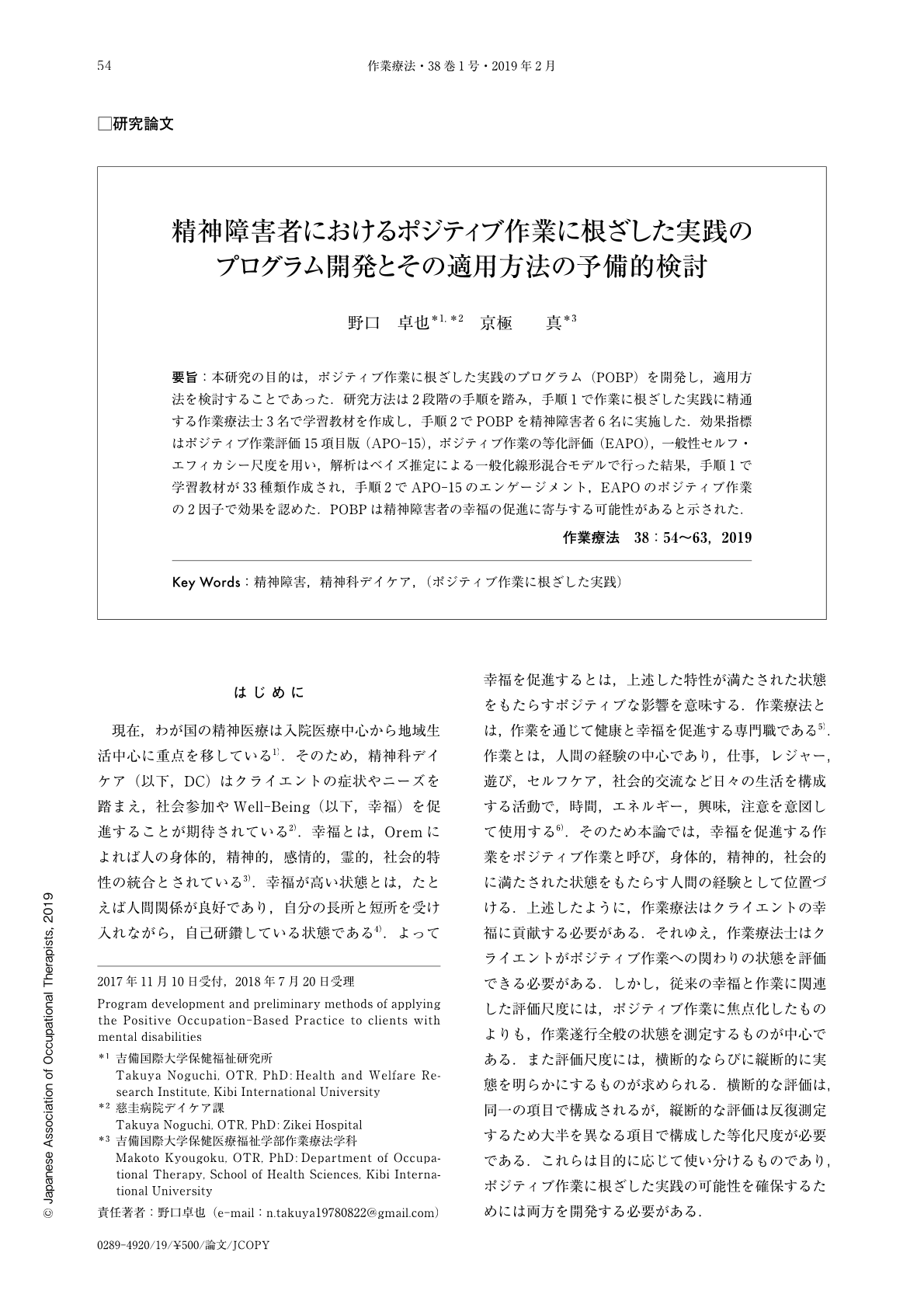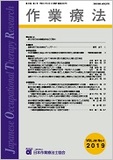Japanese
English
- 販売していません
- Abstract 文献概要
- 1ページ目 Look Inside
- 参考文献 Reference
- サイト内被引用 Cited by
要旨:本研究の目的は,ポジティブ作業に根ざした実践のプログラム(POBP)を開発し,適用方法を検討することであった.研究方法は2段階の手順を踏み,手順1で作業に根ざした実践に精通する作業療法士3名で学習教材を作成し,手順2でPOBPを精神障害者6名に実施した.効果指標はポジティブ作業評価15項目版(APO-15),ポジティブ作業の等化評価(EAPO),一般性セルフ・エフィカシー尺度を用い,解析はベイズ推定による一般化線形混合モデルで行った結果,手順1で学習教材が33種類作成され,手順2でAPO-15のエンゲージメント,EAPOのポジティブ作業の2因子で効果を認めた.POBPは精神障害者の幸福の促進に寄与する可能性があると示された.
The purpose of this research was to study the program development of Positive Occupation-Based Practice (POBP) based on occupations promoting well-being and to examine how to apply the POBP. Learning materials were created with three occupational therapists familiar with occupation-based practice. The examination was administered to 6 clients with mental disorders. We adopted Assessment of Positive Occupation 15 (APO-15), Equating Assessment of Positive Occupation (EAPO) and General Self-Efficacy Scale (GSES) as the effect indicators in this study. In addition, this study examined the intervention effects while using the generalized linear mixture model (GLMM) for data analysis, taking into account the random effect. As a result, 33 types of learning materials for occupation to promote well-being were created. The intervention effect of POBP was recognized in “engagement” of APO-15 and “positive occupation” of EAPO. POBP may contribute to the promotion of well-being among clients with mental disorders.

Copyright © 2019, Japanese Association of Occupational Therapists. All rights reserved.


